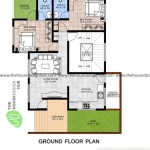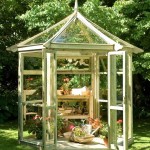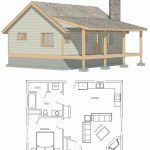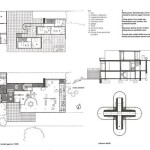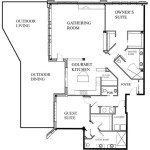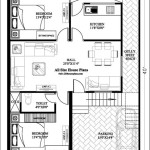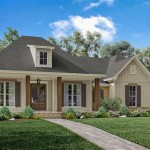Easy Bird House Plans: Free and Printable Options for DIY Enthusiasts
Constructing a birdhouse offers a rewarding experience, allowing individuals to contribute to local avian populations while engaging in a fulfilling do-it-yourself project. Accessing free and printable birdhouse plans simplifies the process significantly, providing clear instructions and dimensions for crafting a suitable habitat for various bird species. This article explores the benefits of using free, printable birdhouse plans, examines different designs available, and guides readers through the essential considerations when selecting and implementing these plans.
The accessibility of free birdhouse plans online has democratized the craft, enabling people of all skill levels to participate. Whether a novice woodworker or an experienced carpenter, downloadable plans provide a structured approach, minimizing errors and ensuring a successful outcome. Furthermore, by utilizing recycled or reclaimed materials alongside these plans, one can contribute to environmental sustainability while creating a welcoming space for birds.
Benefits of Using Free and Printable Birdhouse Plans
Opting for free and printable birdhouse plans offers several advantages compared to purchasing commercial kits or attempting improvisational construction. The primary benefit lies in the cost savings. Purchasing pre-fabricated birdhouses or elaborate plans can be expensive, especially when considering the cost of materials. Free plans remove this barrier, allowing individuals to allocate their budget solely to the necessary lumber, fasteners, and finishing products.
Another significant advantage is the customization potential. While commercial birdhouses often adhere to standardized designs, free plans empower users to modify dimensions, roof styles, and decorative elements to suit their aesthetic preferences and the specific needs of the intended bird species. This adaptability promotes creativity and ensures that the resulting birdhouse complements the surrounding environment.
Printable plans also provide clarity and organization. A well-designed plan includes detailed diagrams, precise measurements, and step-by-step instructions, minimizing confusion and reducing the likelihood of errors during construction. This clarity is especially beneficial for beginners who may lack experience in woodworking. The straightforward format guides them through each stage of the process, from cutting the lumber to assembling the final product.
Ease of accessibility is another noteworthy benefit. Free plans are readily available online, often requiring only a simple search to locate a diverse range of options. They can be downloaded and printed instantly, eliminating the need to wait for shipping or visit a specialty store. This immediacy allows users to begin their project promptly, taking advantage of favorable weather conditions or available free time.
Finally, using printable plans fosters a sense of accomplishment. Successfully completing a birdhouse from a free plan provides a tangible reward for the effort invested. This sense of achievement encourages further exploration of woodworking skills and promotes continued engagement in DIY projects. The satisfaction of providing a safe and comfortable home for birds enhances the overall experience.
Exploring Different Birdhouse Designs and Plans
The world of birdhouse design is remarkably diverse, with various styles catering to different bird species and aesthetic preferences. Understanding the nuances of these designs is crucial for selecting a plan that aligns with one’s specific goals and the local avian population.
Classic birdhouse designs, characterized by their simple box-like structure and pitched roof, are a popular choice for beginners. These plans typically involve straightforward cuts and minimal joinery, making them relatively easy to execute. Such designs often accommodate common backyard birds like wrens, chickadees, and finches. Variations in entrance hole size and birdhouse dimensions can attract different species.
More elaborate designs, such as multi-compartment birdhouses for purple martins or gourd-shaped houses for swallows, offer an increased level of complexity. These plans often require more precise cutting and assembly techniques, catering to individuals with more advanced woodworking skills. Purple martin houses, for example, require multiple compartments to accommodate a colony of birds, while gourd houses need to be specifically shaped and suspended to provide a suitable nesting environment for swallows.
Novelty birdhouses, designed to resemble miniature homes, barns, or other structures, offer a creative outlet for those seeking a more whimsical aesthetic. These plans can range from simple designs with decorative accents to intricate models with detailed architectural features. While they may require more time and effort to construct, novelty birdhouses can add a unique and charming touch to any garden or backyard.
Furthermore, plans for specific bird species, such as bluebirds, require careful consideration of entrance hole size, internal dimensions, and ventilation. Bluebird houses, for example, typically feature a specific entrance hole diameter to deter larger birds from entering and claiming the nest. They also require adequate ventilation and drainage to ensure a healthy environment for the chicks.
When selecting a birdhouse plan, it is essential to research the specific needs of the target bird species. Factors such as nest box size, entrance hole diameter, placement height, and proximity to food and water sources all play a crucial role in attracting birds and promoting successful nesting. Consulting local ornithological resources or birdwatching guides can provide valuable insights into the specific requirements of birds in a particular region.
Essential Considerations When Selecting and Implementing Free Birdhouse Plans
Choosing the right birdhouse plan and implementing it effectively requires careful consideration of several key factors. Neglecting these considerations can lead to a poorly constructed birdhouse that fails to attract birds or provides an inadequate nesting environment.
Material selection is paramount. Untreated cedar, redwood, or pine are commonly recommended due to their durability and resistance to rot. These woods weather well and provide a natural, non-toxic environment for birds. Avoid using pressure-treated lumber, as the chemicals used in the treatment process can be harmful to birds. Recycled wood can also be a viable option, but it should be thoroughly cleaned and free of any contaminants.
Construction techniques are equally important. Ensuring proper joinery and secure fastening is crucial for creating a sturdy and long-lasting birdhouse. Using exterior-grade screws or nails is essential for withstanding the elements. Gluing joints can also enhance the structural integrity of the birdhouse. Pay close attention to the plan's instructions regarding cutting angles and assembly sequences to minimize errors and ensure a professional finish.
Ventilation and drainage are vital for creating a healthy nesting environment. Adequate ventilation prevents the buildup of excessive heat and humidity inside the birdhouse, while drainage holes in the bottom of the birdhouse prevent water from accumulating and causing mold or mildew. Ensure that the selected plan incorporates these features to provide a comfortable and hygienic space for the birds.
Entrance hole size is a critical factor in attracting the desired bird species and deterring unwanted guests. Research the recommended entrance hole size for the target species and adhere to the plan's specifications. Using a hole saw of the correct diameter ensures a clean and accurate hole. Reinforcing the area around the entrance hole with a metal or wooden ring can prevent squirrels or other animals from enlarging the hole and gaining access to the nest.
Placement of the birdhouse is also crucial. Consider the specific habitat preferences of the target bird species and choose a location that provides adequate shelter from the elements and protection from predators. Mounting the birdhouse on a sturdy pole or hanging it from a tree branch can provide a secure and stable platform. Avoid placing the birdhouse in direct sunlight or in areas with excessive wind exposure. Regularly monitor the birdhouse and clean it out after each nesting season to remove old nests and debris. This helps to prevent the buildup of parasites and diseases and ensures that the birdhouse remains a welcoming and healthy environment for future generations of birds.
Finally, ensure the birdhouse is easy to clean. A design that allows for easy access to the interior facilitates regular maintenance and helps prevent the spread of disease. A hinged roof or removable side panel simplifies the cleaning process and ensures that the birdhouse remains a hygienic and inviting space for birds.

Free Birdhouse Plans Diy Homemade Nesting Box Printables Monograms Design Tools Patterns Projects

Easy Diy Birdhouse Plan Laser Cutter Woodworking Templates Freepatternsarea

Birdhouse And Nest Box Plans For Several Bird Species The Birders Report

Birdhouse Plans Easy One Board Diy Project Free Printables Monograms Design Tools Patterns Projects

Bird House Plans Free Construct101

Free Bird House Plans Log Cabin Easy Homemade Box Printables Monograms Design Tools Patterns Diy Projects

Birdhouse And Nest Box Plans For Several Bird Species The Birders Report

53 Free Diy Bird House Feeder Plans That Will Attract Them To Your Garden

Diy Bluebird Approved Birdhouse Tutorial Fanningsparks

Birdhouse Design Blue Print

